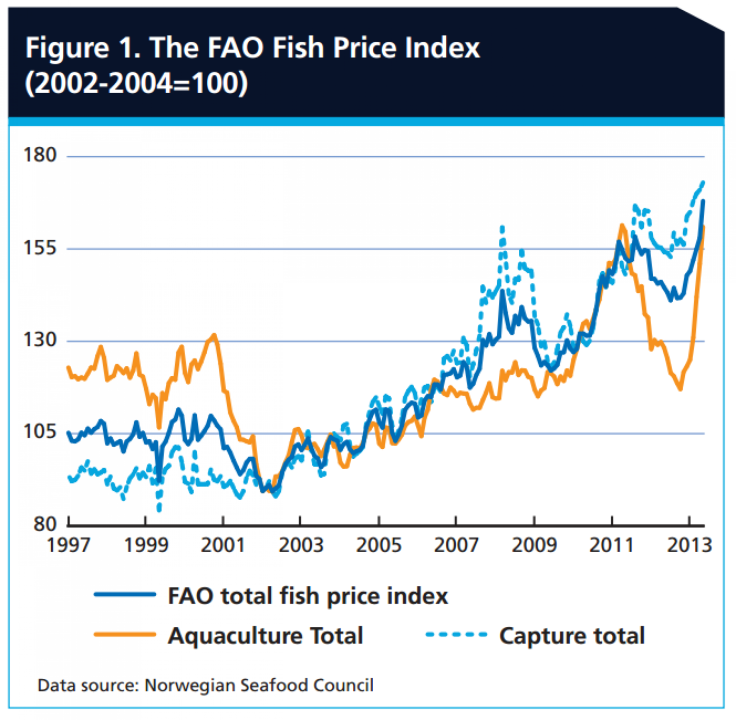Global Fish Prices Hit Record Levels As Demand For Premium Seafood Spikes In China

The price of high-end fish around the world has spiked to an all-time high due to a recent rise in demand in China that is outpacing supply, according to a new report released Tuesday.
The global fish price index, an indicator measured by the U.N.'s Rome-based Food and Agriculture Organization, rose 15 percent in May, well above the level at same time in 2012 and passing the previous peak in 2011.

The global fish price index tracks the cost of wild and farmed seafood and is considered an industry benchmark. Fish industry trade is expected to reach $130 billion by the end of 2013.
However, the FAO says that factors such as growing urbanization, which brings about more supermarkets, results in increased demand for seafood in emerging markets, especially China.
The Chinese diet is changing and has already boosted demand for grains and livestock feed. Now the index shows that the same demand is rising for high-end seafood such as tuna, oysters and shrimp.
"In the coming months, supply constraints for several important species are likely to keep world fish prices on the rise," the FAO's report warns. "China remains the world's largest producer of tilapia and the largest supplier to the European market."
Yet it also states that as China increases its imports of salmon, shellfish and other species, they tighten supply elsewhere. Rising demand in Asia is happening at the same time that supplies for several key species have fallen because of disease and high feeding costs in aquaculture.
© Copyright IBTimes 2024. All rights reserved.












